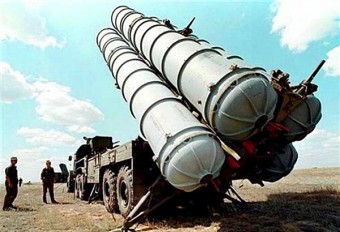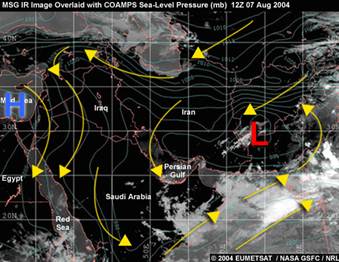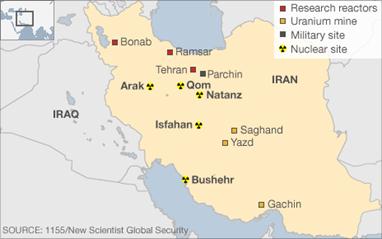“And
they shall not teach every man his neighbour, and every man his
brother, saying, Know the Lord: for all shall know me, from the least
to the greatest.”
(Hebrew
8:11)
All Shall Know Me
Dear Friends,
Greetings. If you are keeping track of what is happening in the middle-East concerning Syria,
Turkey, Iran, Iraq, Israel, etc. and you are familiar with the prophecies of Ezekiel 38 and Ezekiel 39 , you can see how events have accelerated dramatically, racing it would seem, toward the line up of the antagonists falling into place described in the above chapters.
Also, the fact that Russia and China recently signed currency, energy and friendship agreements etc. again could well factor in the cooperation between Magog and the “kings of the east”. Revelation 16:12.
With Vladimir Putin sternly warning Israel and it allies, the west, the US, UK, etc. (ships of Chittim? – Daniel 11:30) against any further interference in Syria's affairs, you can see what incredible accuracy the predictions made between approximately 1,900 years ago to 2,600 years ago in the books of Revelation, Matthew, Daniel, Ezekiel, and many other end-time prophecies throughout the Bible.
It would appear that the time is very close at hand when we shall witness some type of confirmation of a covenant for seven years by an incredible world leader! Daniel 9:27.
This is not even taking into account all of the advances in science, known and unknown, that have us racing towards a cashless chip implanted economy, terribly enhanced surveillance on a global scale, the trans-humanist movement, cloning, world wide economic collapse, Fukushima, etc etc.
The United States alone is currently engaged militarily somehow in a known seventy-four conflicts.
The Bible told us in the Last Days “Evil men and seducers shall wax worse and worse, deceiving, and being deceived.
Giving heed to seducing spirits, and doctrines of devils; Speaking lies in hypocrisy; having their conscience seared with a hot iron.
Having their understanding darkened, being alienated from the life of God through the ignorance that is in them, because of the blindness of their heart: lovers of themselves, lovers of money, boasters, proud, blasphemers, disobedient to parents, unthankful, unholy, unloving, unforgiving, slanderers, without self-control, brutal, despisers of good, traitors, headstrong, haughty, lovers of pleasure rather than lovers of God, having a form of godliness but denying its power.” (2 Timothy 3:13,1 Timothy 4:1-2, Ephesians 4:18, 2 Timothy 3:1-5.)
All one has to do is to discern the signs of the times to know that this is true. The things you read and hear about today, the atrocities, the inhumanity, is all appalling.
But, despite it all, we can still take hope.
Jesus said; “When these things begin to come to pass, then look up, and lift up your heads; for your redemption draweth nigh” and “ know ye that the kingdom of God is nigh at hand.” (Luke 21)

Even
so, come, Lord Jesus.
(Revelation
22:20)
***
FARs News Agency
Russia Not to Tolerate Further Israeli Attacks on Damascus
09 May 2013

TEHRAN (FNA)- Israeli Prime Minister Binyamin Netanyahu, while in Shanghai, was given a sharp dressing-down by Russian President Vladimir Putin, a warning that Russia would not tolerate further Israeli attacks on Damascus and would respond.
Putin did not say how, but he did announce he had ordered the acceleration of highly advanced Russian weapons supplies to Syria. - - Israeli Debkafile's military sources disclosed that the Russian leader was referring to S-300 anti-air systems and the nuclear-capable 9K720 Iskander (NATO named SS-26 Stone) surface missiles, which are precise enough to hit a target within a 5-7 meter radius at a distance of 280 kilometers. - - In his phone call to Netanyahu, the Russian leader advised the prime minister to make sure to keep this in mind. - - Since Syrian air defense teams have already trained in Russia on the handling of the S-300 interceptor batteries, they can go into service as soon as they are landed by one of Russia's daily airlifts to Syria. Russian air defense officials will supervise their deployment and prepare them for operation. - - Moscow is retaliating not just for Israel's air operations against Syria but in anticipation of the Obama administration's impending decision to send the first US arms shipments to the Syrian rebels. - - Intelligence agencies in Moscow and the Middle-East take it for granted that by the time Washington goes public on this decision, some of the Syrian rebel factions will already be armed with American weapons. - - That the measure was in the works was signified by the introduction Monday by chairman of the US Senate Foreign Relations Committee Bob Menendez of legislation allowing the US to provide arms and military training to the Syrian rebels. - - US military instructors have been working with Syrian rebels at training camps in Jordan and Turkey for some months. So putting the arms in their hands only awaited a decision in Washington, the Israeli website alleged. - - Putin's message to Netanyahu was intended to reach a wider audience than Jerusalem, such as Barack Obama in Washington and President Xi Jinping in Beijing ahead of Netanyahu's talks there Tuesday. -
***
WND
GAME-CHANGING RUSSIAN MISSILES 'ALREADY IN SYRIA'
Obama aware, disappointed in support of regime
Published: May 13, 2013
AARON KLEIN

TEL AVIV - A Russian convoy of game-changing S300 missile batteries reached Syria last week, claimed Arab intelligence sources speaking to WND.
Israeli security sources said there is no information to support the Arab claim.
The information comes as the Wall Street Journal and the New York Times reported Israel relayed a message to the Obama administration describing as imminent a Russian deal to sell the advanced anti-aircraft missile systems to Syria.
The S300 missile batteries are able to intercept manned aircraft and guided missiles.
White House spokesman Jay Carney told reporters aboard Air Force One en route to Texas the administration is aware of the reports and is disappointed in Russia's continued support of the Syrian regime.
"We have consistently called on Russia to cut off the Assad regime's supply of Russian weapons including air defense systems that are destabilizing to the region," Carney said. "We have also long said that Russia could play a more constructive role in Syria."
According to the Journal report, Syria has been making payments on a 2010 agreement with Russia to purchase four batteries for $900 million with delivery expected within three months.
The Journal reported the S300 package included six launchers and 144 operational missiles each with a range of up to 200 miles.
DEBKAfile
Putin again warns Netanyahu hands off Syria
DEBKAfile Special Report
May 14, 2013
Putin and Netanyahu talk three hours at Sochi
Israeli Prime Minister Binyamin Netanyahu spent three hours with Russian President Vladimir Putin at his residence in the Black Sea resort of Sochi, Tuesday, May, 14. He came for a last-ditch attempt to head off the supply of advanced Russian anti-air S-300 missile systems to Syria. Instead, the Russian leader turned the conversation around to focus implicitly on Israel's air strikes against Damascus on May 3 and May 5. After their conversation he issued a warning: "In this crucial period it is especially important to avoid any moves that can shake the situation." - This was clearly a hands-off caution to Israel not to repeat its attacks on Damascus. And, furthermore, after "shaking the situation" in Syria by its air attacks, Israel was in no position to demand that Russia avoid selling Syria advanced weapons. - The prime minister, for his part, warned that the entire Middle East was in a dangerous state of volatility.
He was accompanied by Israeli Military Intelligence Chief Maj. Gen. Aviv Kochavi. Opposite him sat Mikhail Fradkov, SVR Director.
Kochavi laid before the Russian leader the information Israel had gathered on the state of Syria's chemical weapons with relevance to their transfer to the Lebanese Hizballah. - Before Netanyahu's arrival for the meeting, Moscow took two preparatory steps:
1. Russian diplomats leaked to the London-based Arab press a report that the S-300 missiles had already arrived in Syria. According to Al-Quds Al-Arabi, Moscow had delivered 200 launchers (probably missiles) and the Syrian missile teams already knew how to use them. - By this leak, the Israeli prime minister was being informed that his journey to Sochi was a waste of time and that the use of S-300 missiles for shooting down Israeli Air Force planes was no longer controlled by Moscow but by Damascus. - 2. The prominent strategic analyst, Viktor Kremenyuk of The USA and Canada Institute in Moscow, reported Tuesday that Netanyahu arrived in Sochi to indirectly let Putin know that "Israel would destroy the S-300s when they are delivered and start being assembled." - The deputy director of an important Russian think tank which advises the Kremlin on North American policy does not tend to make idle comments. - DEBKAfile's Moscow sources interpreted Kremenyuk's remark as a means of informing the Israeli leader that Moscow was not impressed by such threats. Instead of pushing Putin to stop the S-300 missiles, Israel would be more advantageously employed urging the Obama administration to adopt a more realistic stand on Syria and Bashar Assad. - In Moscow's view, Washington must be brought to give up its threat of Western military intervention in Syria, of which the Israeli air strikes appeared to Putin as the harbinger, and come to terms with Assad's presence in any political solution of the Syrian conflict.
These positions the Russian President had conveyed previously to US Secretary of State John Kerry and UK Prime Minister David Cameron. He made it clear to Netanyahu that he stood by them as firmly as ever. Therefore, say DEBKAfile's sources, so long as both powers remain entrenched in their positions, there is not much hope of their coming together on an international conference to resolve the Syrian conflict. - DEBKAfile's military sources add: It is also unlikely that the Russian and Israeli leaders had a chance to work out reciprocal ground rules for the Russian officers supervising the S-300 missile operations in Syria to avoiding hitting Israeli Air Force jets or for Israeli bombers to refrain from destroying them.
The S-300 is designed to shoot down planes and missiles at 200-km ranges. - Israel is concerned that Moscow may decided to send the six S-300 batteries carrying 144 missiles due for Syria along with Russian missile and air defense specialists. They will also be available for operating the missiles effectively for downing Israeli Air Force planes striking targets in Syria and Lebanon. Israel will be forced to think twice before attacking the S-300 batteries for fear of hitting the Russian officers. Putin is therefore placing a severe constraint on Israel's operational freedom by spreading an anti-air missile cover over the Syrian, Hizballah and the Iranian Basij forces fighting for Bashar Assad.
Global Research
Good-bye Dubai? Bombing Iran's Nuclear Facilities would leave the Entire Gulf States Region virtually Uninhabitable
By Wade Stone
Global Research
May 11, 2013
Every Spring and Summer, during a period of low pressure over the Persian Gulf, powerful winds known as the "shamals and sharqi," sweep down from the north and north east into Saudi Arabia, whipping up ever more grains of sand as they head south and south west across the Arabian Desert. Frequently, these sandstorms become gargantuan in size - hundreds of meters high and kilometers wide and in length of dense roiling particulate, choking the lungs of those exposed, blocking out the sun completely and, by the time they are over, burying whole towns, sometimes even large cities like Riyadh, in a meter deep or more of sand.

Sandstorm hitting Riyadh, Saudi Arabia, 2012
The wind speeds range from 30 to 300 kilometers per hour, and they generally take a semi-circular route, heading back out to the southern gulf and the remaining Gulf States. Indeed, on an annual basis all of the Gulf States combined - UAE, Qatar, Bahrain, Oman, Kuwait and Saudi Arabia, suffer through literally hundreds of such sand and dust storms. And most often the winds driving those sandstorms originate from the north and north east (Iran, Iraq, Kuwait, and sometimes even Turkey).

NASA satellite image of typical shamal wind directions
Below is a map showing the location of Iran's nuclear facilities and uranium mines. Now look again at the previous NASA satellite image and note the primary shamal wind direction.

Think "Fukushima x 10": Bombing Iran's nuclear facilities would leave the entire Gulf State region virtually uninhabitable.
Fukushima is, without question, the world's worst nuclear disaster to date. In fact, many scientists believe, and with good reason, that the Fukushima incident, which is far from over, is the world's worst environmental catastrophe.
"While the long-term repercussions of the Fukushima Daiichi nuclear disaster are yet to be fully assessed, they are far more serious than those pertaining to the 1986 Chernobyl disaster in the Ukraine, which resulted in almost one million deaths (New Book Concludes - Chernobyl death toll: 985,000, mostly from cancer" Global Research, September 10, 2010. For a full account of Fukushima, see "Global Research Online Interactive Reader Series, Fukushima: A Nuclear War without a War, The Unspoken Crisis of Worldwide Nuclear Radiation (Michel Chossudovsky, editor).
Now imagine several large nuclear reactors (Iran's Bushehr reactor output, for example, is 1000 megawatts, compared to Fukushima Daiichi's largest reactor which had an output of 784 megawatts), along with several uranium enrichment plants, and certainly military storage sites and quite likely even uranium mines, all bombed to dust within a matter of days. Moreover, unlike the Fukushima Daiichi reactors which suffered only partial meltdowns with much of the fuel rods and spent fuel storages remaining mostly intact, "all" of Iran's nuclear fuel would be exploded into the atmosphere. And let us not forget that the US-Israeli military ordinances employed to destroy Iran's nuclear facilities would certainly be tipped with depleted uranium, and very likely would include some mini-nukes.
Indeed, in regards nuclear disasters and environmental catastrophes, Fukushima would absolutely pale in comparison to that caused by the bombing of Iran's nuclear sites. The nuclear fallout from such an event would be extreme, to put it mildly. Tens, if not hundreds of thousands of innocent Iranians would likely die within the first year of such a strike, while millions more would die within a decade or two of some form of radiation-induced cancer. And since a significant portion of that nuclear fallout would end up either immediately, or over the course of the next weeks and months in the Arabian Desert, where the winds, year after year, would gather it up along with the particles of sand and dust into gigantic roiling irradiated storms (remember, "hundreds" of such sand and dust storms annually), not a person living anywhere in the Gulf State region would be safe from exposure. The Persian Gulf, too, would soon be so irradiated and toxic and lifeless that it might as well be renamed the New Dead Sea.
Some statistics worth recalling: The half-life of cesium-137 is just over 31 years, while that of strontium-90 is approximately 29 years. Plutonium-239, the most dangerous of the above-mentioned radioactive substances, has a half-life of 24,110 years. And uranium, which is the primary target and which will make up the largest percentage of the fallout, has a half-life ranging between 700 million to nearly 4.5 billion years, depending on the type of uranium used--U-235 or U-238. It's also worth noting that it takes an estimated 20 x the half-life years listed for the radiation from such contamination to dissipate entirely.
Of course, a lot of that radiation would also enter the jet stream, which would then carry it around the globe, depositing it as nuclear fallout everywhere. No nation, no body of water, would be spared. It takes but "one" inhaled or ingested "hot" particle to produce a life-threatening cancer.
Calling for, even so much as contemplating, such a genocidal event is madness; actually carrying it out would be insanity beyond description.
We must conclude, therefore, that the US-NATO-Israeli alliance is bluffing. Shortly before each and every scheduled P5+1 negotiations regarding Iran's nuclear program, the corporate/government controlled mainstream media in the West ratchets up the threats, with Israel insisting that they will soon bomb Iran's nuclear facilities if their nuclear program isn't shut down. We've been hearing these same threats for more than a decade now. The very fact that the other Gulf States in the region are in support of the US-NATO-Israeli alliance also suggests that such threats are all smoke-and-mirrors, attempts to scare Iran into accepting whatever demands US-NATO and Israel want.
Surely, the Gulf State monarchs especially are aware enough to realize that, even if Iran is planning to develop a nuclear weapon (for which no evidence whatsoever exists), a nuclear-armed Iran would be far less of a danger to them than a bombing of Iran's nuclear facilities, which would positively guarantee their demise. Even Israel, which is only 1100 kilometers away from Iran, and also experiences regular severe sand and dust storms, would likely suffer dire consequences as a result of the radiation fallout from such an attack.
Has such absolute insanity infected the minds of the Western powers to such a degree that they actually would attack Iran, and in so doing destroy the entire Gulf State region, further irradiate the entire planet and themselves, and quite possibly set off World War III? Or is it all just smoke-and-mirrors, scare tactics and rhetoric, and saner minds will in fact prevail?
Let us all hope and pray for the latter.
***
WND
JUDGMENT HAS ARRIVED IN AMERICA
Exclusive: Craige A. McMillan weeps for what was once a great nation
Published: May 10,2013
How has America fallen so far, so fast?
I suspect many readers ask themselves that same question, some on a daily basis. Yet the sad fact is, the majority of us are complicit in America's fall from grace. Nothing reveals this more than the Kermit Gosnell murder trial. I won't go into details, because most of us are incapable of comprehending the depravity revealed in that open court testimony.
Morally and ethically, the U.S. Supreme Court justices who voted to force states to legalize abortion are as guilty as the abortion clinics that have murdered 65 million innocents since Roe v Wade. Out of thin air, a "right" was discovered in the nation's founding documents guaranteeing that half the population could relieve itself of the consequences of an unwanted pregnancy, at the cost of another human being's life.
In place of 65 million babies that would have been, the abortion industry sprang to life. Doctors, who had sworn an oath to "do no harm" suddenly found abortion a lucrative career. Like most industries "serving" the poor, it soon demanded public subsidy for its "good works."
Enterprising politicians took this campaign blood money, blessed it at the altar of their ambitions and offered the increase that the abortion industry sought. In so doing, they slaughtered the right to conscience for American taxpayers who recognized abortion as the abomination that it was: the willful murder of innocents by that one person God most intended to protect them.
Having succeeded in destroying the conscience of this nation, those same politicians set their sights on the rest of the world. American taxpayers subsidized this, too. We exported our brutality worldwide.
Be part of the national day of prayer and fasting on 9/11/2013
Curiously silent were America's Christian churches. Beyond offering sermons or homilies on an annual right-to-life Sunday, and lighting a candle for the endless list of victims, they chose to worship as the alter of 501(c)3 IRS tax deductible contributions. Christians who did exercise their freedom of speech against abortion were marginalized by the media-wing of the abortion industry and prosecuted by the government.
The debate fell silent. Only God cared.
Welcome to the endgame, America. Judgment has arrived. We will take the world's illegal immigrants, on the off-chance they may someday pay taxes. Obamacare death panels will soon set up shop in America's nursing homes. "Yes, we know you were promised Medicare, but there is no money. We aborted those children. No taxpayers, no money. No money, no treatment. Sorry. Next!"
As Lincoln said of the raging civil war during his second inaugural address: "Yet, if God wills that it continue until all the wealth piled by the bondsman's two hundred and fifty years of unrequited toil shall be sunk, and until every drop of blood drawn with the lash shall be paid by another drawn with the sword, as was said three thousand years ago, so still it must be said 'the judgments of the Lord are true and righteous altogether.'"
***
Wired
One-Third of U.S. Honeybee Colonies Died Last Winter, Threatening Food Supply
BY BRANDON KEIM0
5.08.13

Nearly one in three commercial honeybee colonies in the United States died or disappeared last winter, an unsustainable decline that threatens the nation's food supply.
Multiple factors -- pesticides, fungicides, parasites, viruses and malnutrition -- are believed to cause the losses, which were officially announced today by a consortium of academic researchers, beekeepers and Department of Agriculture scientists.
"We're getting closer and closer to the point where we don't have enough bees in this country to meet pollination demands," said entomologist Dennis vanEngelstorp of the University of Maryland, who led the survey documenting the declines.
Beekeepers lost 31 percent of their colonies in late 2012 and early 2013, roughly double what's considered acceptable attrition through natural causes. The losses are in keeping with rates documented since 2006, when beekeeper concerns prompted the first nationwide survey of honeybee health. Hopes raised by drop in rates of loss to 22 percent in 2011-2012 were wiped out by the new numbers.
The honeybee shortage nearly came to a head in March in California, when there were barely enough bees to pollinate the almond crop.
Had the weather not been ideal, the almonds would have gone unpollinated -- a taste, as it were, of a future in which honeybee problems are not solved.
"If we want to grow fruits and nuts and berries, this is important," said vanEngelstorp. "One in every three bites [of food consumed in the U.S.] is directly or indirectly pollinated by bees."
Scientists have raced to explain the losses, which fall into different categories. Some result from what's called colony collapse disorder, a malady first reported in 2006 in which honeybees abandon their hives and vanish. Colony collapse disorder, or CCD, subsequently became a public shorthand for describing bee calamities.
Most losses reported in the latest survey, however, don't actually fit the CCD profile. And though CCD is largely undocumented in western Europe, honeybee losses there have also been dramatic. In fact, CCD seems to be declining, even as total losses mount. The honeybees are simply dying.
"Even if CCD went away, we'd still have tremendous losses," said entomologist Diana Cox-Foster at Pennsylvania State University. "CCD losses are like the straw that breaks the camel's back. The system has many other issues."
Studying these issues isn't easy. In real-world agricultural settings, it's hard to run the rigorous, every-last-variable-controlled experiments on which definitive conclusions are founded. These experiments can be run in labs and small-scale test fields, but whether those accurately reflect real-world complexity is debated.
Amidst the uncertainties, scientific attention has settled on a group of culprits, the most high-profile of which is a class of pesticides known as neonicotinoids. These were developed in the 1990s, rushed to market with minimal studies of potential harms, and subsequently became the world's most-used pesticides.
In the last several years, it's become evident that neonicotinoids are extremely toxic to honeybees and, even in small, sub-lethal doses, make bees more vulnerable to disease. The European Union recently limited neonicotinoid use, and the U.S. Environmental Protection Agency is reviewing their use.
Pesticide companies have fought the restrictions, arguing that neonicotinoids are unfairly blamed. Most non-industry scientists say the question isn't whether neonicotinoids are a problem, but where they fit into a constellation of problems.
"Different studies indicate that this class of pesticide is rather harmful to the bees," said honeybee pathologist Cédric Alaux of the French National Institute for Agricultural Research, who said the E.U.'s restrictions are sensible. "However, we should not be too naive and think that it will solve the bee problem."
Just as important as neonicotinoids, and perhaps more so, are Varroa destructor mites. First detected in the United States in 1987, the mites weaken bees by sucking their hemolyph, the insect analogue of blood, and also transmit viruses and other parasites. A recent USDA report called Varroa "the single most detrimental pest of honey bees."
The report also noted that neonicotinoid exposure alters immune system function in Varroa-infected bees and makes bees more vulnerable to infection by Nosema ceranae, another parasite implicated in honeybee losses. It's possible that neonicotinoids used on crops don't usually kill bees outright, but weaken them enough for other stresses to become lethal.
Agricultural entomologist Christian Krupke of Purdue University likened the effects to "living in an area with extreme levels of smog, causing your body and immune system to become overtaxed so that a common cold progresses to pneumonia."
Krupke noted that although neonicotinoids are the most common poisonous chemicals in honeybee environments, they're far from the only chemicals. Cox-Foster and vanEngelstorp stressed that point, referencing research that found 121 different pesticides in honeybee hives. On average, each hive contained traces of 6 pesticides, and sometimes several dozen.
Research on pesticide interactions is in its infancy, but combinations may be extremely harmful to bees, amplifying what the chemicals would do alone. "I worry that the neonicotinoid attention is distracting from the other pesticides that have clear effects, and might even have stronger effects. Things like fungicides are completely unregulated for bees," said vanEngelstorp. "I think we need to keep the pesticide investigation broader."
'We're getting closer and closer to the point where we don't have enough bees.'
Another, less-appreciated aspect of honeybee life also gained attention in the winter survey and new USDA report: what they eat. Though commercial bees are trucked on pollination circuits around the United States, most beekeepers have home bases in the upper Midwest, an area that's undergone significant changes in recent years.
Rising food prices led farmers to plant crops in fields previously considered marginal or set aside as grasslands. Honeybees forage in those grasslands, and can't get the nutrition they need from flowering crops alone.
Add the record-setting drought of summer 2012, and bees were hard-pressed for nourishment. Malnourishment could in turn make bees more vulnerable to pests and infections, or exacerbate the effects of pesticides.
"The drought, the possible combination of factors that went with it, was clearly a big problem for a lot of beekeepers," vanEngelstorp said. "In some cases, it was a combination of Varroa and these malnourished, pesticide-exposed bees."
Commercial bees pollinate dozens of crops, and though colonies can be replaced, continuing losses could soon render beekeeping economically unviable. Researchers are trying to breed more resilient bees, but the combination of chemicals, nutrition and disease will likely prove insurmountable by genetic improvements alone, said Cox-Foster.
She said native pollinator habitat needs to be left intact or re-established; a field that goes unplanted, or a roadside left unmowed, can be thought of as insurance against commercial honeybee loss. Dennis vanEngelstorp recommended that, as a rule of thumb, 10 percent of land mass should be managed as pollinator havens.
Pesticides can also be used more carefully. Rather than being applied broadly, across entire fields and locales, they can be precisely targeted to outbreaks. Other unnecessary uses can be averted.
"Many entomologists and pest management professionals have been saying for years that there is no pest management justification for using these insecticides on virtually every crop grown in North America," said Krupke. "Yet, the opposite trend is occurring."
The honeybee catastrophe could also signal problems in other pollinator species, such as bumblebees and butterflies, that are not often studied.
"Thinking of honeybees as our canary in the coal mine, a monitor for environmental conditions, is very appropriate," Cox-Foster said. "With honeybee colonies, you have the ability to open them up and see what's going on. There are many other species needed for pollination, but with most of those, we don't have the ability to see what's happening."
Update 5/9: Francesco Nazzi, an entomologist at Italy's University of Udine who studies the interactions of pests, parasites and honeybee immune systems, said he feels neonicotinoid pesticides "are not the major cause of widespread colony losses but one of many different causes, whose incidence may vary according to the local situation."
Nazzi pointed to surveys of honeybee losses in Canada, China, Israel, Turkey and western Europe, which have varied widely by locale and circumstance, with no clear explanation. In the European Union, where neonicotinoid use will be decreased but not eliminated for the next two years, Nazzi does not expect to see any clear, black-and-white effect.
Evidence about potential neonicotinoid harm, though, is "convincing enough to suggest caution," he said. "One may say that a broader ban may not be sufficient on its own to 'save' the bees, but it could help." Nazzi said the crucial question is whether neonicotinoid is even needed. "At least in Italy, in most cases, their use is actually uncessary," he said.
Rolling Stone:
"Mass release of floating radioactive particles in metro St. Louis" possible from inferno at landfill? Fire "smells like dead bodies" -- 8,700 tons of nuclear waste nearby
Published: May 13th, 2013
Title: St. Louis Landfill Fire - Source: Rolling Stone - Author: Steven Hsieh - Date: May 10, 2013
An underground landfill fire near tons of nuclear waste raises serious health and safety concerns - so why isn't the government doing more to help?
It's invisible to area residents, buried deep beneath the ground in a North St. Louis County landfill. "It smells like dead bodies," observes another local.
"Am I going to end up with cancer 20 years down the road?"
The Bridgeton landfill fire is burning close to at least 8,700 tons of nuclear weapons wastes.
About 1,200 feet south of the radioactive EPA site, the fire at Bridgeton Landfill spreads out like hot barbeque coals. No one knows for sure what happens when an underground inferno meets a pool of atomic waste, but residents aren't eager to find out.
At a March 15th press conference, Peter Anderson - an economist who has studied landfills for over 20 years - raised the worst-case scenario of a "dirty bomb," meaning a non-detonated, mass release of floating radioactive particles in metro St. Louis. "Now, to be clear, a dirty bomb is not nuclear fission, it's not an atomic bomb, it's not a weapon of mass destruction," Anderson assured meeting attendants in Bridgeton's Machinists Union Hall. "But the dispersal of that radioactive material in air that could reach - depending upon weather conditions - as far as 10 miles from the site could make it impossible to have economic activity continue."
Robert Criss, a geochemist at Washington University in St. Louis who has studied the issue closely, says the EPA is grossly underplaying a host of risks surrounding West Lake - flooding, earthquakes, liquefaction, groundwater leaching - that could pave the way for a public health crisis. That's not to mention the recent development of an underground fire nearby. Says Criss, "There is no geological site I can think of that is more absurd to place such waste."
Natural News
Lipstick found to contain alarmingly high levels of aluminum, cadmium and lead
by: Ethan A. Huff, staff writer
May 10, 2013

(NaturalNews) A popular cosmetic product since time immemorial, lipstick has long been used by women in many diverse cultures to accentuate their femininity and emanate their own unique expressions of elegance and style to the outside world. But a new study released by the University of California, Berkeley (UCB) School of Public Health raises fresh concerns about the safety of using conventional lipstick products, as many of them were found to contain dangerously high levels of aluminum, cadmium, lead and other toxins.
UCB researchers tested 32 common lipstick and lip gloss products widely sold in stores today and found that many of them are loaded with cadmium, chromium, aluminum and at least five other metals. Published in the peer-reviewed journal Environmental Health Perspectives, the findings revealed that women who use such products even at modest levels could be greatly increasing their risk of developing a host of potential health conditions, including gastrointestinal upset, nerve damage, and cancer.
"Lipstick and lip gloss are of special concern because when they are not being blotted on tissue or left as kiss marks, they are ingested or absorbed, bit by bit, by the individual wearing them," explains a UCB press release about the study. "Using acceptable daily intakes derived from this study, average use of some lipsticks and lip glosses would result in excessive exposure to chromium, a carcinogen linked to stomach ulcers."
Most conventional beauty products contain a multitude of toxins at varying levels
Of the 32 products tested, researchers found that 24 of them, or 75 percent, also contained lead, which is known to cause brain, cellular, and DNA damage. Since no level of lead exposure is considered safe for young children, this discovery is particularly concerning as many younger girls use lipstick with their friends when they play dress up and other childhood games.
"I believe that the FDA (Food and Drug Administration) should pay attention to this," says Sa Liu, author of the study and researchers in environmental health sciences at UCB. "Our study was small, using lip products that had been identified by young Asian women in Oakland, Calif. But, the lipsticks and lip glosses in our study are common brands available in stores everywhere. Based upon our findings, a larger, more thorough survey of lip products - and cosmetics in general - is warranted."
The FDA actually did conduct its own investigation back in late 2011 on lead in lipstick and found that every single sample among 400 collected contained lead. A shocking 380, or 95 percent, of the lipstick samples tested contained levels of lead at more than 0.1 parts per million (ppm), which is higher than the maximum level permitted in candy bars. But in typical FDA fashion, the agency largely discounted its own findings, declaring at the time that lead levels are "very low and [do] not pose safety concerns."
"Some of the toxic metals are occurring at levels that could possibly have an effect in the long term," says UCB professor S. Katharine Hammond, who helped lead the new study. "It's the levels that matter."
Sources for this article include:
http://newscenter.berkeley.edu/2013/05/02/toxic-metals-in-lipstick/
http://www.usatoday.com
http://www.naturalnews.com/035027_lipstick_lead_FDA.html
***
NaturalNews (Edited from longer article.)
Australian Telegraph newspaper endorses medical child abuse: Unvaccinated children should be raised as outcasts
May 12, 2013
by Mike Adams, the Health Ranger
Editor of NaturalNews.com

(NaturalNews) In a new low for even the mainstream media, the Daily Telegraph and Sunday Telegraph newspapers in Australia are pushing a campaign of outright medical child abuse they call "NO JAB NO PLAY." The campaign demands that unvaccinated children be barred from all social contact with other children and condemned to the life of a social outcast where parents are presumably supposed to raise them in cages in dark basements. The paper has launched its horrific, anti-human-rights campaign, "NO JAB NO PLAY" that demands children who are not vaccinated with state-mandated chemicals (which include mercury, formaldehyde, aluminum and other toxins) be denied interaction with other children.
I'm not making this up. The paper, which seems to be run by a band of human rights haters and child abuse proponents, all but admits wanting to turn children into anti-social monsters and psychological criminals -- just one of the side effects of forcing children to be raised without healthy social interaction with other children. This is the first time in history that an Australian newspaper has directly called for the medical abuse of children -- and seem to be happy about doing so!

***
New York Daily News
Boy genius diagnosed with autism has IQ higher than Einstein
Kristine Barnett noticed that her little boy Jacob - whom doctors had tagged as autistic - seemed to have a fascination with patterns. So she took him out of his school's special ed program and let him study the things he's passionate about. Now Jacob is on his way to winning a Nobel Prize.
BY CAROL KURUVILLA / NEW YORK DAILY NEWS
MAY 10, 2013

Jacob Barnett, who was diagnosed with moderate to severe autism at 2 years old, is now studying for a master's degree in quantum physics. www.BBC.CO.UK
But experts say the 14-year-old Indiana prodigy has an IQ higher than Einstein's and is on the road to winning a Nobel Prize. He's given TedX talks and is working toward a master's degree in quantum physics.
The key, according to mom Kristine Barnett, was letting Jacob be himself -- by helping him study the world with wide-eyed wonder instead of focusing on a list of things he couldn't do.
Diagnosed with moderate to severe autism at the age of 2, Jacob spent years in the clutches of a special education system that didn't understand what he needed. His teachers at school would try to dissuade Kristine from hoping to teach Jacob any more than the most basic skills.

Kristine Barnett, author of "The Spark: A Mother's Story of Nurturing Genius," said that she initially found it hard to get Jacob the right education. www.BBC.CO.UK
Jacob was struggling with that sort of instruction -- withdrawing deeper into himself and refusing to speak with anyone.
But Kristine noticed that when he was not in therapy, Jacob was doing "spectacular things" on his own.
"He would create maps all over our floor using Q-tips. They would be maps of places we've visited and he would memorize every street," Kristine told the BBC.
One day, his mom took him stargazing. A few months later, they visited a planetarium where a professor was giving a lecture. Whenever the teacher asked questions, Jacob's little hand shot up and he began to answer questions -- easily understanding complicated theories about physics and the movement of planets.

Jacob was silent for much of his childhood. But when he started to speak, he was able to communicate in four different languages. COURTESY OF RANDOM HOUSE
Jacob was just 3-1/2 years old.
His mom realized that Jacob might need something that the standard special education curriculum just wasn't giving him.
So Kristine decided to take on the job herself.
"For a parent, it's terrifying to fly against the advice of the professionals," Kristine writes in her memoir, "The Spark: A Mother's Story of Nurturing Genius." "But I knew in my heart that if Jake stayed in special ed, he would slip away."

Jacob Barnett with his mother. Developmental specialists told Kristine that her child would never learn to read or tie his shoes. COURTESY OF RANDOM HOUSE
The Hamilton County mom, a nursery school teacher, decided to take Jacob out of school and prepare him for mainstream kindergarten herself.
Jacob thrived under his mom's personal attention. She let him explore the things he wanted to explore. He studied patterns and shadows and stars. At the same time, she made sure that he enjoyed "normal" childhood pleasures -- softball, picnics -- along with other kids his age.
"I operate under a concept called 'muchness,'" Kristine said. "Which is surrounding children with the things they love -- be it music, or art, whatever they're drawn to and love."
By the time he was 11 years old, Jacob was ready for college. He's now studying condensed matter physics at the Indiana University-Purdue University in Indianapolis.

Jacob (far left, bottom) with his family. COURTESY OF RANDOM HOUSE
His IQ rounds out to 170 -- higher than that of Albert Einstein. He's been working on his own theory of relativity. Professors at Princeton's Institute for Advance Study were impressed.
"The theory that he's working on involves several of the toughest problems in astrophysics and theoretical physics," astrophysics Professor Scott Tremaine wrote to the family in an email.
"Anyone who solves these will be in line for a Nobel Prize."
Warner Bros. has snatched up movie rights to Jacob's story. Kristine and her son have embarked on a European book tour, but hope to have some time to rest by July.
"My goal for the summer is just to give him a few weeks off," Kristine told the Indianapolis Monthly. "The last time he had that was when he came up with the alternative theory to the Big Bang. So who knows what he'll create?"
***
Until
next week...keep on believing.
Almondtree
Productions
“The
joy of the Lord is your strength.
(Nehemiah
8:10)